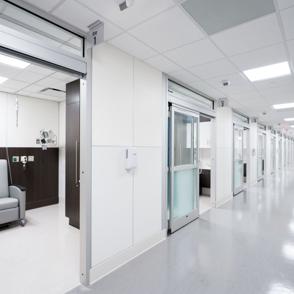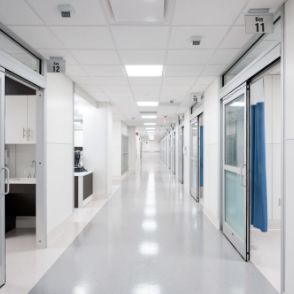The cost of prefab healthcare construction is often misunderstood. While traditional builds are still common in the NHS and private sector, more and more healthcare providers are turning to prefabricated solutions, not just for speed but because of the long-term cost benefits.
This blog breaks down where the real savings are, what hidden costs are often overlooked and how modern prefabricated systems are helping hospitals and clinics do more with tighter budgets.
Why Cost Matters More Than Ever
Healthcare providers across the UK are under increasing pressure to deliver more – more appointments, more capacity, more services, with less. According to the National Audit Office, the maintenance backlog across NHS estates reached £11.6 billion in 2022–23 and £13.6 billion in 2023–24. With NHS England projecting it will exceed £15 billion by 2027–28, the conversation is no longer just about how to build but how to do it in a way that delivers long-term value.
That’s why the cost of prefab healthcare construction is such an important factor. It’s not just about upfront spending; it’s about reducing disruption, limiting ongoing maintenance and delivering adaptable spaces that can be reconfigured repeatedly throughout the building’s lifespan.
Comparing Traditional vs Prefab Healthcare Builds
Traditional construction methods are often slow, invasive and prone to delays. The cost of labour, prolonged site access and scope changes mid-project can all lead to unplanned increases in the budget.
In contrast, prefab healthcare construction offers:
– An average of 30% faster build times
– Clearer upfront costs with fewer on-site variables
– Minimal disruption to live healthcare settings
– Reduced material waste and lower carbon footprint
A side-by-side comparison reveals that while traditional construction can come with hidden or unpredictable costs, prefabricated healthcare solutions offer greater cost certainty and efficiency throughout the project.
Lifecycle Costs and Maintenance
One of the most overlooked areas in construction is the cost of maintenance and reconfiguration. Integrated prefabricated systems allow components to be updated, adapted or expanded without shutting down entire departments.
Prefab reduces those hidden onsite costs by:
– Combining multiple trades into single
– Avoiding rework and delays
– Reducing labour costs through streamlined installation
Post Install, or Day 2 costs are reduced by:
– Ease of maintenance through removable panels and all-round cavity access
– Reconfiguration and refurbishments, using the same materials purchased on Day 1
– Seamless adaptability of new services when needs evolve
If you are factoring in the cost of prefabricated healthcare construction early on, it’s important to include these lifecycle benefits as part of the equation.
Planning for the Long Term
The cost of prefab healthcare construction also includes its long-term value. Modular interiors are easy to adapt – whether that means adding extra services, reconfiguring a room for a new speciality or responding to updated NHS infection control guidance.
This flexibility protects investment by futureproofing your space. It also supports patient safety and staff efficiency without demolition and waste.
As materials are chosen for durability and hygiene, long-term maintenance costs are also significantly reduced compared to traditional interiors.
Getting More from Your Budget
Prefab doesn’t just reduce build costs, it helps you make better use of the budget you already have. For example, integrating casework, power, data, technology and medical gases into prefabricated systems saves time, coordination and labour costs. It also removes the need for multiple trades working in overlapping schedules.
More efficiency = more capacity to invest in other priorities, like new equipment, recruitment or patient care improvements.
What to Consider When Planning a Prefab Project
Understanding the cost of prefab healthcare construction means knowing where savings are made but also where smart investments pay off. If you’re in the early stages of planning, consider:
– Can your design reduce touchpoints between patients and staff?
– Are your materials durable, hygienic and compliant?
– Will the space need to adapt in 3-5 years?
Working with the right partner means these questions are addressed upfront and that surprises down the line are avoided.
Reframing the Cost Conversation
The cost of prefab healthcare construction isn’t just about faster installs. It’s about smarter planning, reduced disruption and better long-term performance.
Because we know this too well, we have put together a free cost comparison toolkit to help you break down the numbers, evaluate your options and build with confidence.
At Architectural Wallsz, we design, manufacture and deliver prefabricated solutions that meet the real pressures of healthcare today and the future. If you’re planning your next project and want to understand how prefabrication could reduce cost and complexity, we are here to help.






Sorry, the comment form is closed at this time.